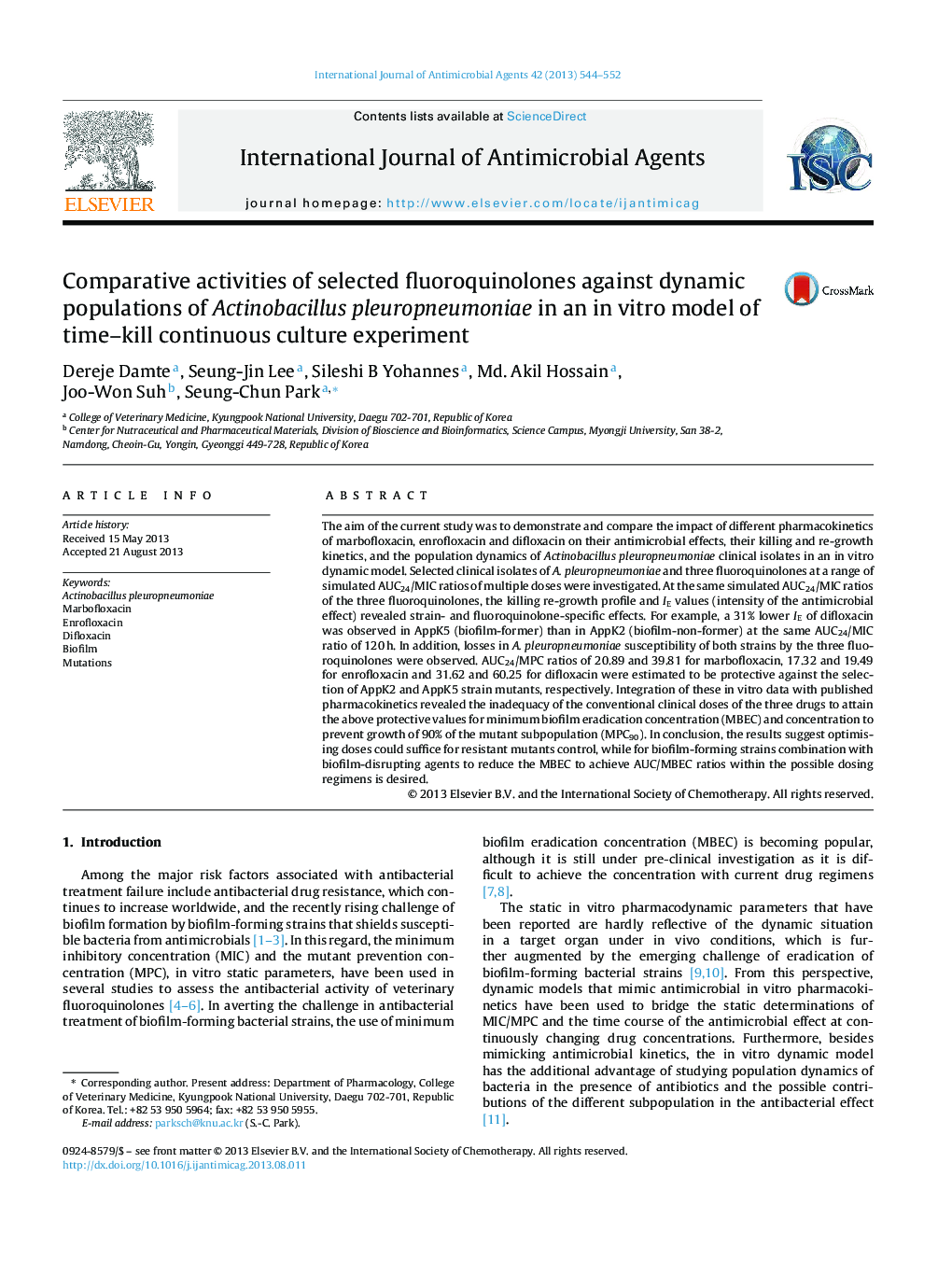| کد مقاله | کد نشریه | سال انتشار | مقاله انگلیسی | نسخه تمام متن |
|---|---|---|---|---|
| 6117949 | 1591786 | 2013 | 9 صفحه PDF | دانلود رایگان |
عنوان انگلیسی مقاله ISI
Comparative activities of selected fluoroquinolones against dynamic populations of Actinobacillus pleuropneumoniae in an in vitro model of time-kill continuous culture experiment
دانلود مقاله + سفارش ترجمه
دانلود مقاله ISI انگلیسی
رایگان برای ایرانیان
کلمات کلیدی
موضوعات مرتبط
علوم زیستی و بیوفناوری
ایمنی شناسی و میکروب شناسی
میکروبیولوژی و بیوتکنولوژی کاربردی
پیش نمایش صفحه اول مقاله

چکیده انگلیسی
The aim of the current study was to demonstrate and compare the impact of different pharmacokinetics of marbofloxacin, enrofloxacin and difloxacin on their antimicrobial effects, their killing and re-growth kinetics, and the population dynamics of Actinobacillus pleuropneumoniae clinical isolates in an in vitro dynamic model. Selected clinical isolates of A. pleuropneumoniae and three fluoroquinolones at a range of simulated AUC24/MIC ratios of multiple doses were investigated. At the same simulated AUC24/MIC ratios of the three fluoroquinolones, the killing re-growth profile and IE values (intensity of the antimicrobial effect) revealed strain- and fluoroquinolone-specific effects. For example, a 31% lower IE of difloxacin was observed in AppK5 (biofilm-former) than in AppK2 (biofilm-non-former) at the same AUC24/MIC ratio of 120Â h. In addition, losses in A. pleuropneumoniae susceptibility of both strains by the three fluoroquinolones were observed. AUC24/MPC ratios of 20.89 and 39.81 for marbofloxacin, 17.32 and 19.49 for enrofloxacin and 31.62 and 60.25 for difloxacin were estimated to be protective against the selection of AppK2 and AppK5 strain mutants, respectively. Integration of these in vitro data with published pharmacokinetics revealed the inadequacy of the conventional clinical doses of the three drugs to attain the above protective values for minimum biofilm eradication concentration (MBEC) and concentration to prevent growth of 90% of the mutant subpopulation (MPC90). In conclusion, the results suggest optimising doses could suffice for resistant mutants control, while for biofilm-forming strains combination with biofilm-disrupting agents to reduce the MBEC to achieve AUC/MBEC ratios within the possible dosing regimens is desired.
ناشر
Database: Elsevier - ScienceDirect (ساینس دایرکت)
Journal: International Journal of Antimicrobial Agents - Volume 42, Issue 6, December 2013, Pages 544-552
Journal: International Journal of Antimicrobial Agents - Volume 42, Issue 6, December 2013, Pages 544-552
نویسندگان
Dereje Damte, Seung-Jin Lee, Sileshi B Yohannes, Md. Akil Hossain, Joo-Won Suh, Seung-Chun Park,